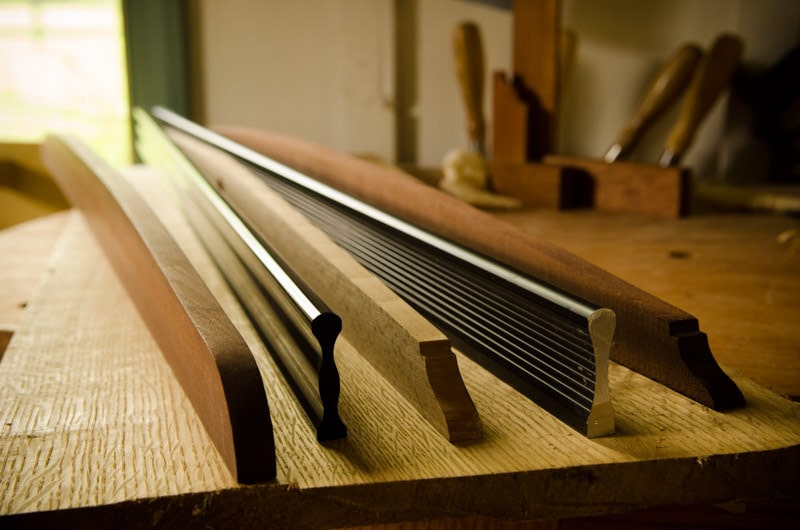
Disclosure: WoodAndShop.com is supported by its audience. When you purchase through certain links on our site, we may earn a small affiliate commission, at no cost to you. Learn more.
Buying or Making a Straightedge
Next we move onto another tool in the woodworking gauges category: a straight edge. A straight edge has many uses, especially testing the faces and edges of your boards for flatness when squaring them up with hand tools. You can see how to do this in my video on squaring lumber with hand tools.

I also use a straight edge a lot when I’m calibrating my machinery, especially the beds of my power jointer and thickness planer. Straight edges can be made in your shop out of wood, or purchased from a store. I have made about 12 wooden straight edges, mostly for my students to use, and I own two commercial straight edges.
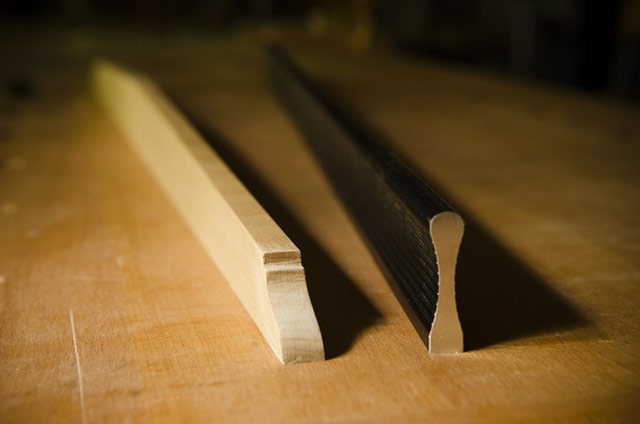
The commercial straight edges are typically metal. I love both styles, and use both metal and wooden straight edges on a regular basis. And of course, both styles have their pros and cons:
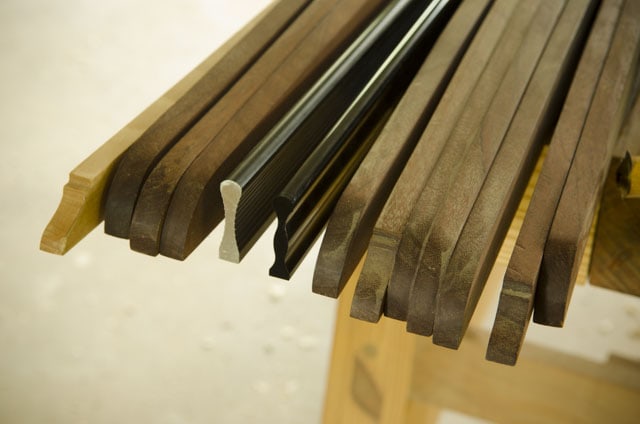
Wooden straight edges are cheap to make, especially if you already have some stable, quartersawn hardwood lumber to make them out of. Quartersawn boards are characterized by vertical end grain, as you can see here:
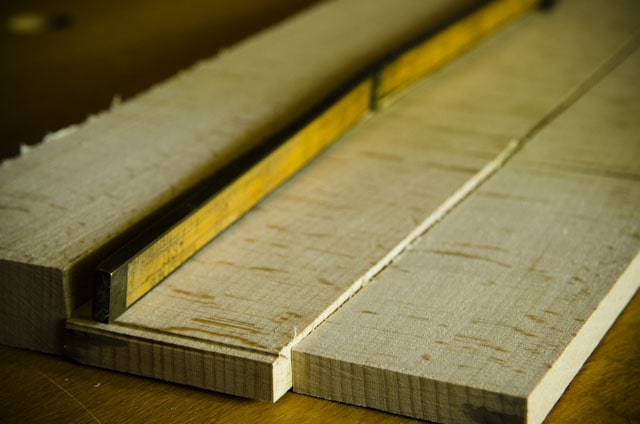
Wooden straightedges are also easy to repair if dropped on the floor, or if the wood moves over time. You just run a jointer plane over the edge, or run it across your power jointer. The downside of a wooden straight edge is that the wood does move over time, and you need something to test it’s flatness on. The cast iron table of a table saw or power jointer are good surfaces to test them on.
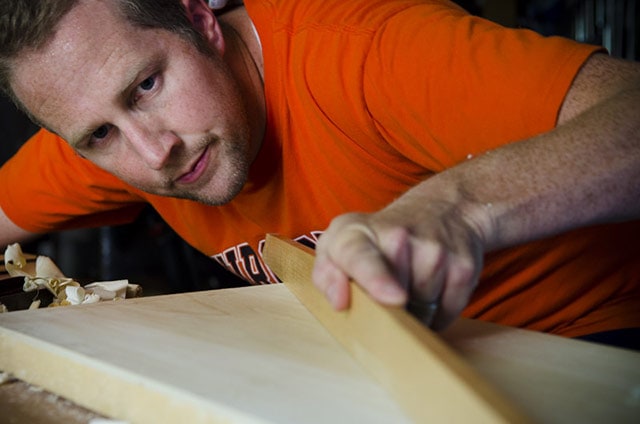
The pros of metal straight edges are that they don’t have to be trued up, and you can count on them for always staying flat, because the good ones are precision ground to a tight tolerance. That is, unless you drop them. That’s the con. You can ruin a metal straight edge. But I’m always really careful so I’ve never dropped a metal straight edge yet…knock on wood.
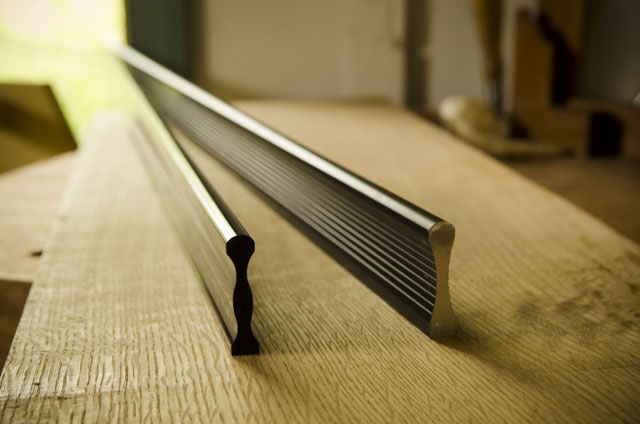
Good metal straight edges can run anywhere from $35 for a good aluminum straight edge, all the way up to a couple hundred dollars for a steel straight edge. I’ve had excellent luck with a couple brands of aluminum straight edges, including this nice 38″ Veritas Aluminum Straightedge:
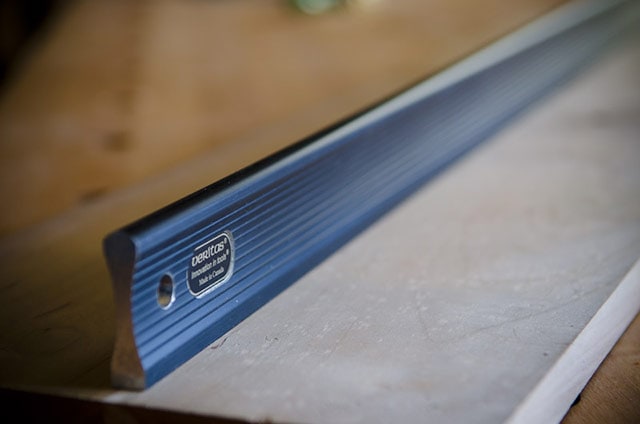
It runs about $43 + shipping from Canada. But I feel that a better value (which I got recently) is my my 38″ Anodized Aluminum straight edge, made by Taytools (pictured below), which you can find here. It is just as high quality, and runs about $37 + shipping from the United States. They also sell a lot of other great woodworking gauges.
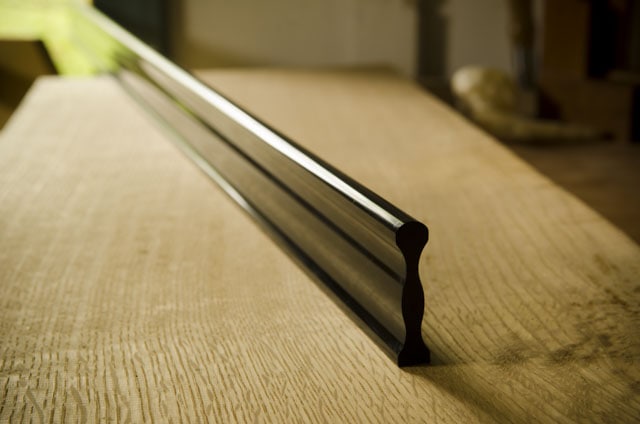
My personal preference is to have a straight edge around 3 feet long. That’s kind of the sweet spot for me when I’m handplaning boards.
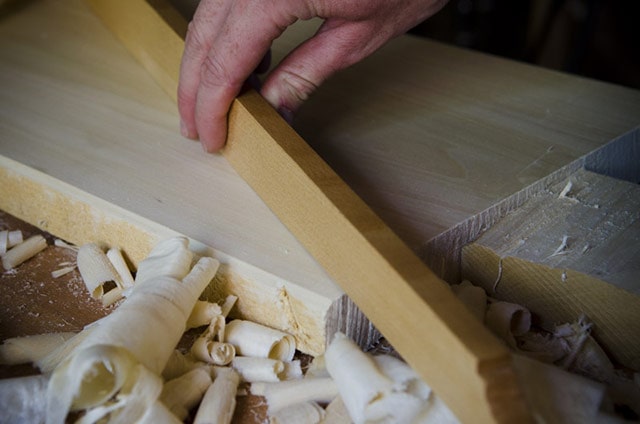
A while back, I made a video on making a wooden straight edge, so you can see that video and article (here) if you want to go the route of a wooden straight edge.
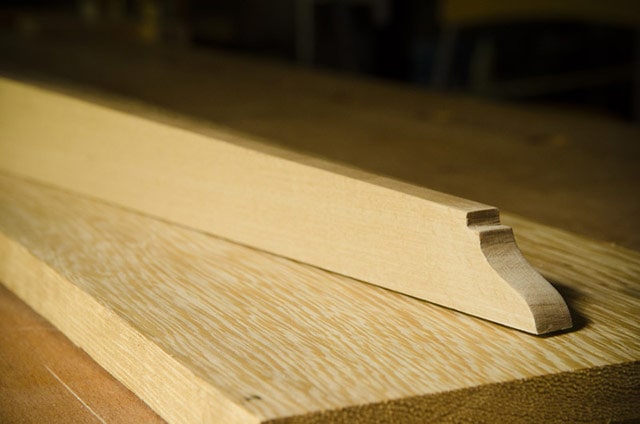
Making Winding Sticks
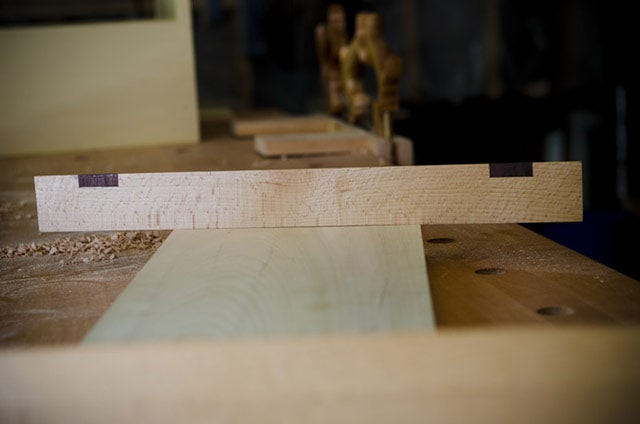
Winding sticks are another tool in the woodworking gauges category, which are used to help you test a board for “wind”, or twisting. You set these sticks at opposite ends of a board, parallel to each other, and sight down the board to see which two corners are higher than the other two. The winding sticks magnify the twisting in the board so you can see the twisting better. Then I use a handplane to bring down the high corners.
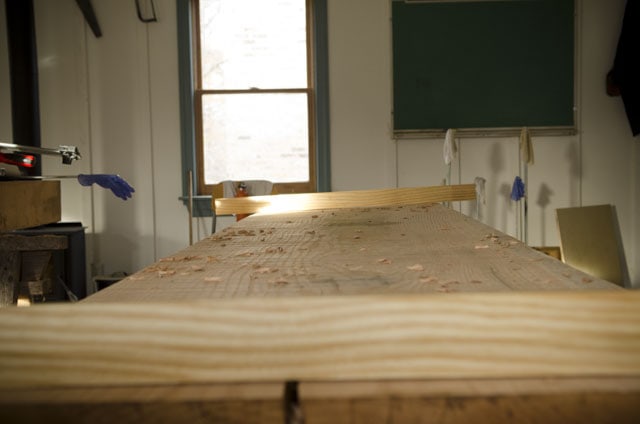
I would recommend that you don’t buy winding sticks. You can, and should, make your own winding sticks. It’s a perfect beginner’s project, and only takes me about an hour to make. And contrary to popular belief, winding sticks don’t need to be fancy. Just like with a straight edge, you can use simple straight pieces of quarter sawn scrap hardwood and inlay some contrasting wood.
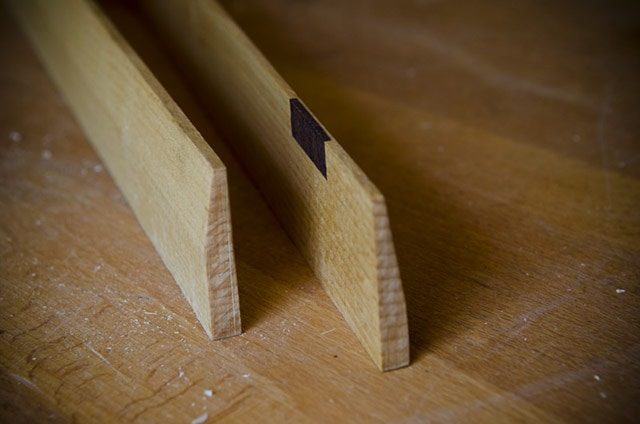
And if you are intimidated by inlaying wood, then you can bore holes and just add dowels, like I did on the winding sticks below (center):
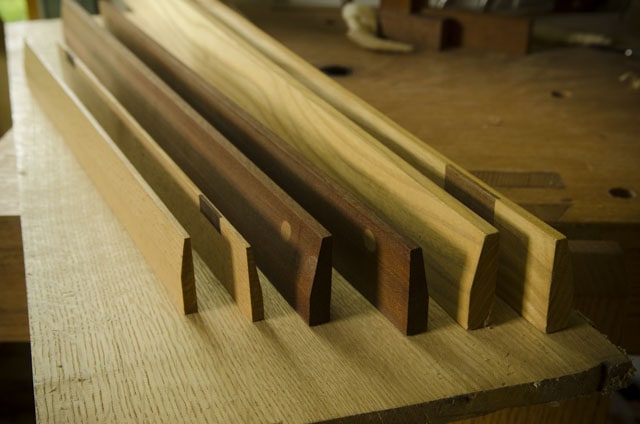
And I’ve even heard of woodworkers buying angled aluminum from the hardware store and spray painting the ends for visibility. It’s not pretty, but it’ll do the job!
But if you want to make some pretty winding sticks, you can watch this video (also see my blog post here) that I made on making your own winding sticks:
RELATED
Which 20 Woodworking Hand Tools Should You Buy First?
Why Traditional Hand Tool Woodworking?
10 Jaw-Dropping Woodworking Shop Tours
57 Page Moravian Workbench Plans Now for Sale
How to Make a Mortise and Tenon Joint with Woodworking Hand Tools
8 Steps to Cutting Dovetails with Woodworking Hand Tools
Buying a Folding Rule
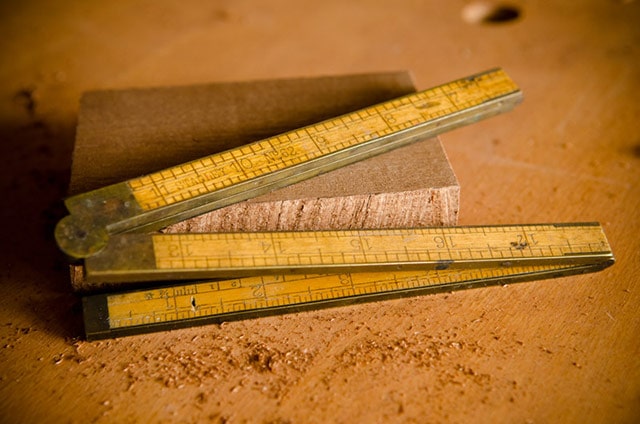
A folding rule is a tool that’s used for taking measurements on your wood, and it folds up nicely to be stored in your back pocket. Folding rules are used for somewhat-precise measuring. You can find vintage folding rules for really cheap, but beware; not all folding rules are created equal. You can either buy a nice flat folding rule, like this one, or a “zig zag” style folding rule, like this one:
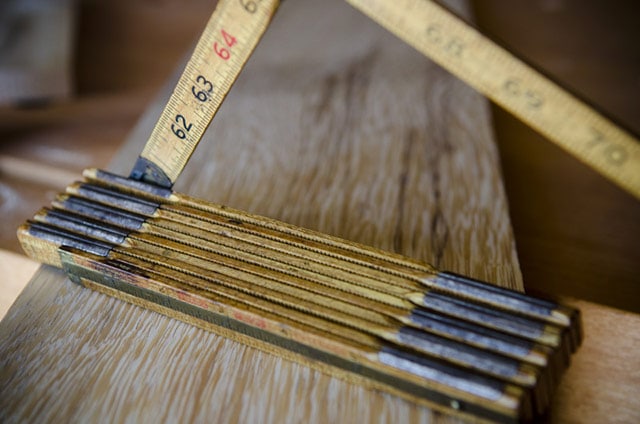
The zig zag folding rules are usually not collectible, and are thus much cheaper. They also extend longer, and can be found new. But the vintage rules are higher quality.
I personally like having a longer zig zag folding rule and a shorter (about 24-inch long) folding rule. I think they are nicer to look at, and they fit easier into a pocket:
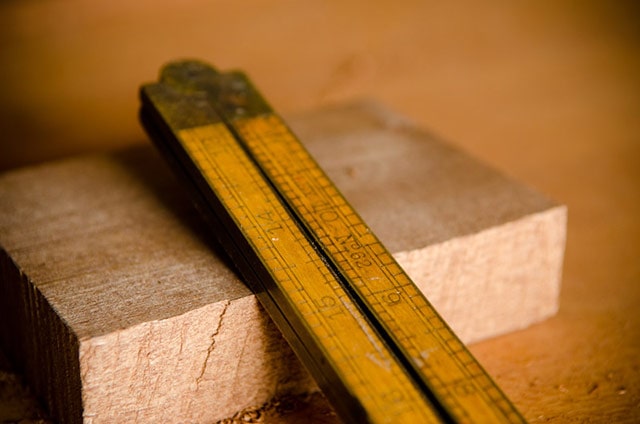
Here’s what to look for when buying a good folding rule:
First, make sure the numbers & lines aren’t worn off.
Second, make sure the metal joints are in good shape, and aren’t wobbling. You can try applying a little oil in the joint to see if that helps.
Third, check to make sure one of the ends isn’t broken off. This is quite common on the zig-zag rules…especially after my kids have gotten a hold of them. I’m not joking, they’ve broken at least two of mine!
Fourth, if you’re looking to get a nice vintage folding rule, look for one that has a boxwood body, a rounded brass top, and brass edges. In my article I’ve shared a couple of my favorite vintage models that won’t break the bank.
A lot of people love the Stanley No. 62 folding rule, which I also love (pictured above). It’s made out of boxwood, with brass linking the edges and top hinge. As of the writing of this article, they run between $15 and $20 for user-grade rules (non-collectible). If you’re on a really tight budget, and you already have a tape measure, then that can get you by for awhile. I typically prefer tape measures for rough measurement of lumber length, but prefer the non-retracting folding rules for more accurate measurements. Here are links to a couple vintage folding rules that should work great for you:
Buying a Tape Measure
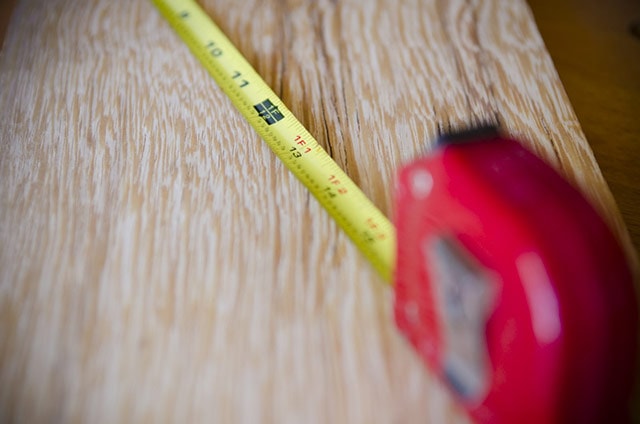
If you don’t own a folding rule, I want you to realize that you can certainly use a tape measure. I use a tape measure mostly for when I need to make rough measurements or for when I go to the lumber yard, because the folding rules aren’t long enough. But in my opinion, it’s easier to get measuring errors when using tape measures. Especially if you don’t know why the metal hook on the end of a tape measure wobbles! If you know why it wobbles, leave a comment below so everyone will know how cool you are! If you don’t, then read the comments below.
I like to have a shorter, 12′ tape measure for most woodworking applications, because I rarely measure lumber over that length. But when I’m doing carpentry work, I like a tape measure that extends over 25’. You really don’t need to buy two tape measures though. Just use what you’ve got, or what you can find.
Here are a couple really good quality tape measures that will work well:
Buy Metal Rulers
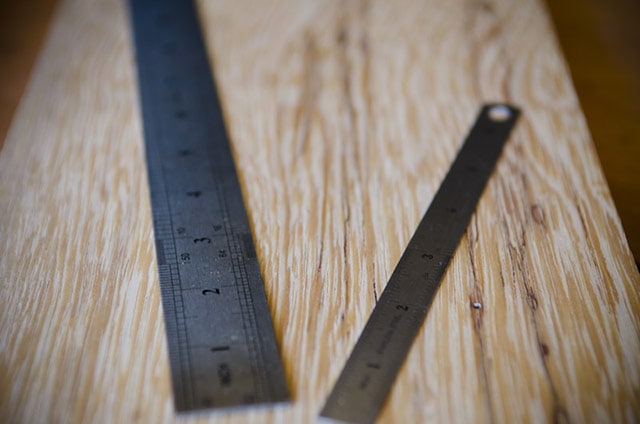
I recommend that you purchase a 12″-18″ metal ruler and a tiny 6″ metal ruler. I usually rely on measurements taken from gauges rather than numerical measurements, but having a couple metal rulers can be handy when precision isn’t super vital; like double-checking to make sure you’re about to make the correct cut. I also use the 6″ metal ruler for sharpening a back bevel on my hand plane irons (click here). Check out metal rulers here:
Buying Pencils or Lead Holders
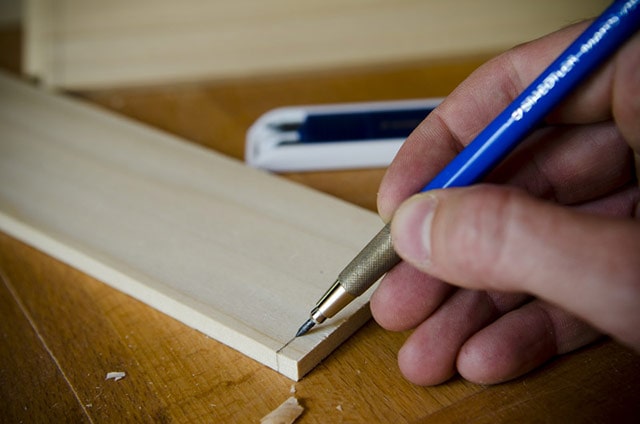
I use a pencil all the time to mark the wood or to darken the lines that I marked with my marking knife or cutting gauges. A normal pencil or mechanical pencil will work just fine.
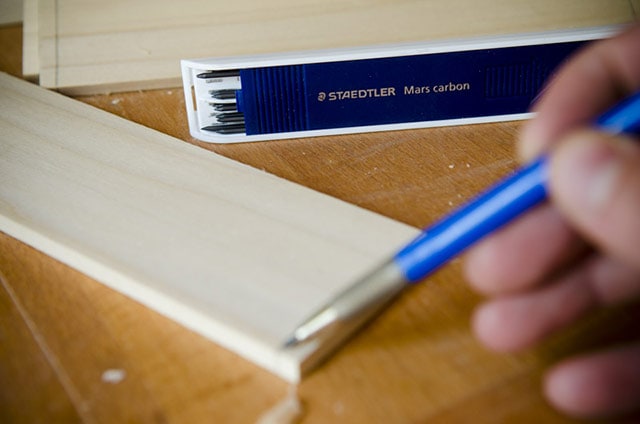
Another option to consider is a lead holder. Nearly 20 years ago, while in my high school architecture class, I was required to purchase a Staedtler Mars 780 “Lead Holder” and Staedtler HB lead. At the time I thought it was a bit expensive, but 18 years later and the led holder is still working! I really like it for woodworking because the lead is sturdy and doesn’t easily break. And the sharpener is built into the butt of the lead holder. The special Staedtler Mars Plastic Eraser is also pretty amazing…it’s practically residue-free…doesn’t crumble like most erasers.
This type of pencil is not absolutely necessary, just convenient. But sometimes I prefer a very fine led mechanical pencil (like these super cheap 0.7 mm Bic mechanical pencils), especially for marking dovetails. A 24 pack runs about $3.50 (about $0.14 per pencil). The lead breaks off very easily, but it’s worth it to get a super fine line.
Buying a Protractor
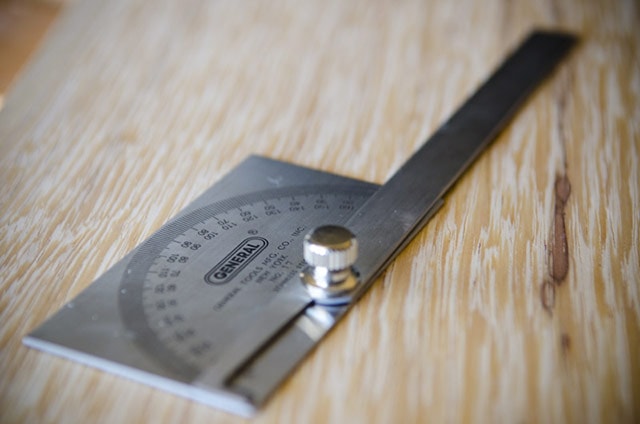
I’m always needing to check angles with traditional woodworking, especially with sharpening. A protractor is very useful for getting accurate angles for chisels, plane irons, and other edge tools. Here are a couple good protractors:
Make a Pinch Rod / Diagonal Testing Stick
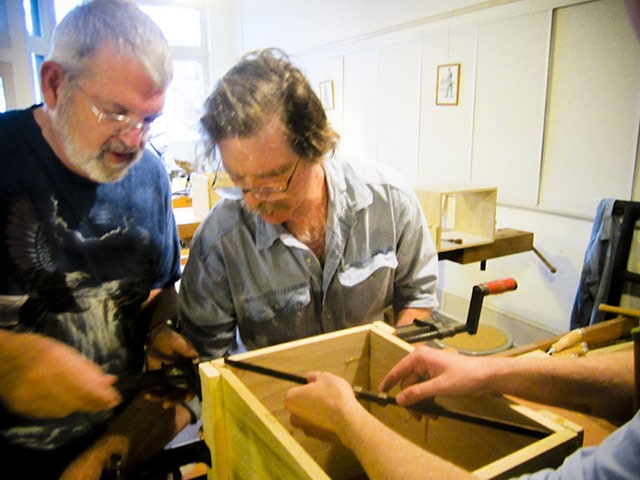
You can get away with using a good square and folding rule to test squareness during glue-ups, but a diagonal testing stick (or “pinch rod”) is more accurate. Years ago Roy Underhill taught me how to use one, and it works perfectly. You can just make the wooden part by hand, and then purchase these Veritas Bar Gauge Heads for around $15-18 (click here). I also just discovered that Veritas came out with a nice metal version for $69 (click here). Roy Underhill has a free video where he shows how to make these:
Buying Dial Calipers or Digital Calipers
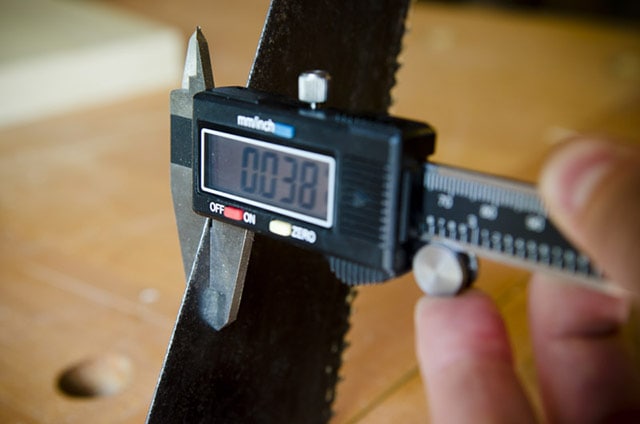
Dial calipers are useful for precise measurement of thickness. They are very useful for saw makers and wood turners. I mostly use mine for measuring saw blade thicknesses and chisel handles (when turning them on a lathe). Dial calipers are more reliable than digital calipers, and don’t need batteries. But digital calipers are more affordable. So you just need to balance that decision out in your own mind. I don’t use dial calipers very often so I just purchased these digital dial calipers on Amazon.
But you can find higher quality dial calipers and digital calipers here on Highland Woodworking (click here) or used dial calipers on eBay (click here). Taylor Toolworks also has a good variety of affordable calipers (click here).
Buy Trammel Points
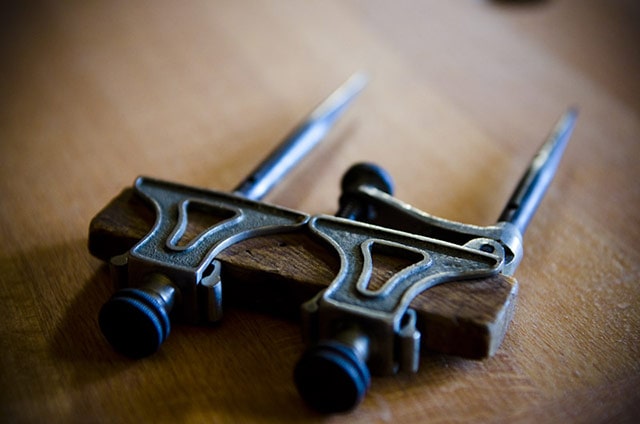
Trammel Points are useful for scribing large arcs & circles (think a round table top), when your dividers are just too small. From my photo, you wouldn’t believe that it would make a large circle. But you can simply insert your own piece of wood, at any length. I keep mine stored on a small piece of wood in my tool chest. My lovely antique trammel points were given to me as a gift, but you can find some good used ones here:
Buying a Feeler Gauge
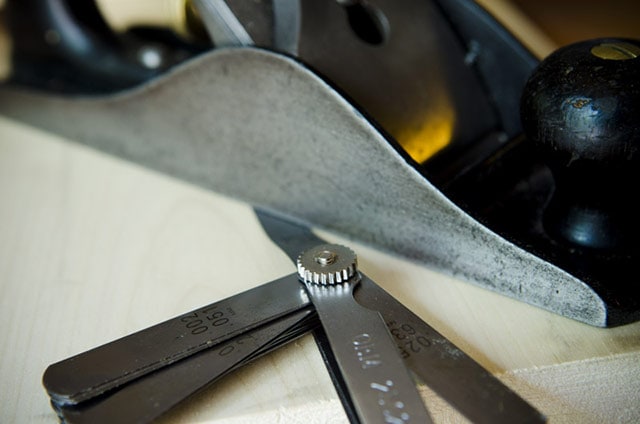
A feeler gauge is helpful for using under a straight edge to see how far a surface is from flat. This is particularly useful when flattening the soles of hand planes. Lay a straight edge on the sole and see where you can push the feeler gauge under. I purchased this feeler gauge on Amazon for around $5 and it is suitable. No need to get fancy here.
Buy a Dovetail Marker
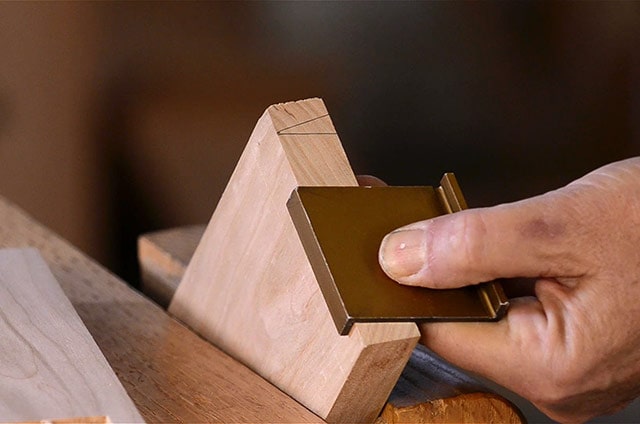
I don’t think it’s necessary to purchase a dovetail marker, but some people really like them for speed. I generate my own dovetail angles with a square, compass, and chisel. That’s the more traditional method. Some people argue that the angle of the dovetail is really critical, and that hardwoods need to be somewhere around a 1:8 ratio and softwoods need to be around a 1:6 ratio. I think that’s silly. I’ve seen many intact antique dovetails that fall outside of these modern requirements. Yes, a super narrow dovetail angle can split easier and a super wide angle looks ugly, but don’t get too caught up with a precise angle. Just find dovetails that look good to you and use that angle.
But here are some dovetail markers if you are set on using them:
- Generic set of 2 dovetail markers ($13) 1:8 (hardwoods) and 1:6 (softwoods)
- Lie-Nielsen wooden dovetail marker ($35) 1:7 (hardwoods) and 1:6 (softwoods)
- Veritas dovetail marker ($17) 1:6 (softwoods)
- Veritas dovetail marker ($17) 1:8 (hardwoods)
- See all dovetail markers at Taylor Toolworks
Continue to the Handplanes Buying Guide (#3)
TOOL GUIDE SHORTCUTS:
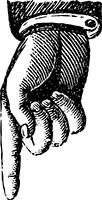
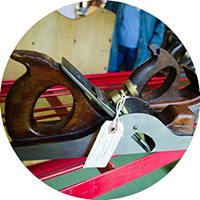
HAND TOOL BUYER’S GUIDES
- Intro to Buying Woodworking Hand Tools
- Workbench & Tool Storage
- Layout, Marking, & Measuring Tools
- Handplanes
- Handsaws
- Chisels
- Sharpening & Honing Supplies
- Mallets & Hammers
- Hand Drills, Braces, & Bits
- Tools for Curved Work
- Tools for Green Woodworking
- Woodworking Clamps, Gluing & Fasteners
- Tools for Wood Carving
- Products for Wood Finishing, Sanding & Scraping
- Wood Turning Tools & Lathes

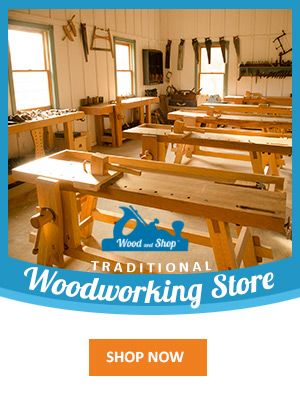

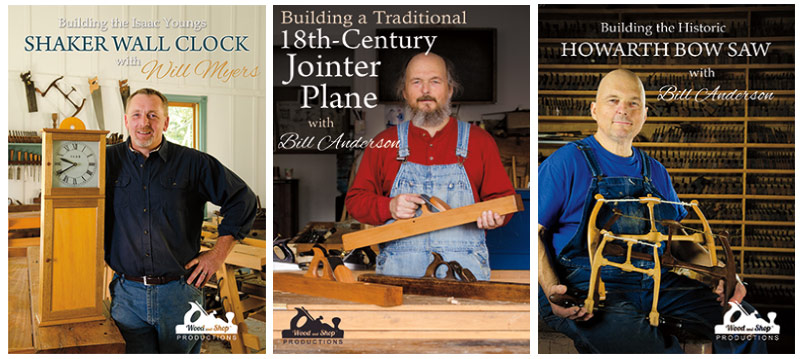
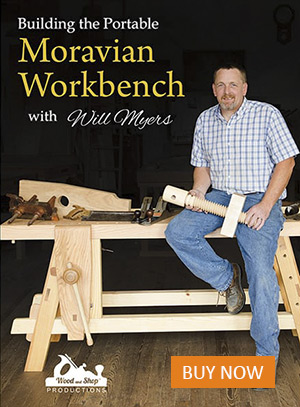
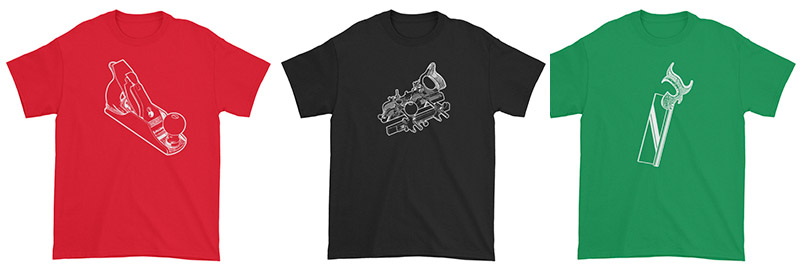
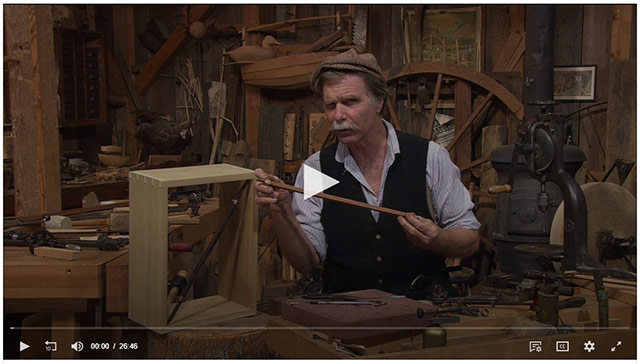
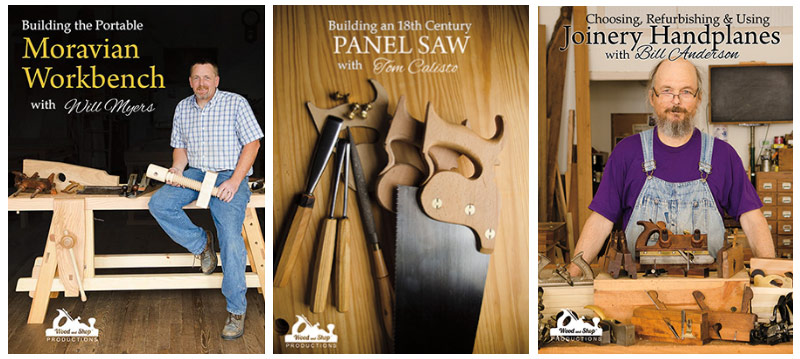
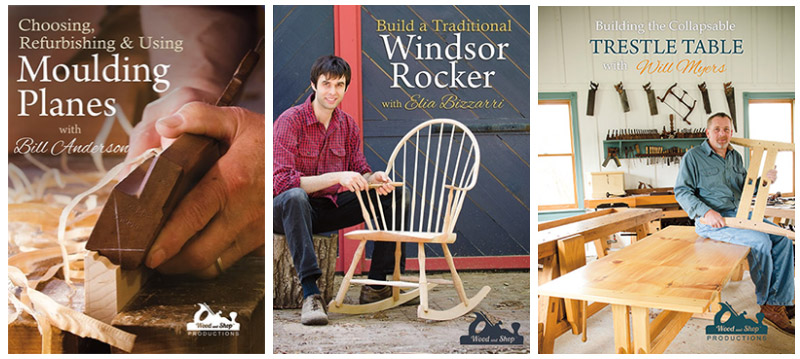
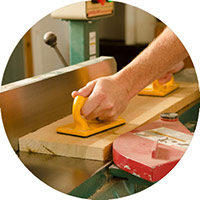
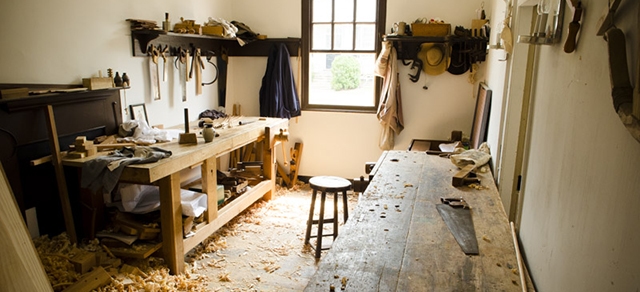
On Straight Edges (winding sticks, etc.) I use angle aluminum.
Stay straight, can be sighted flat, both edges or on the V Back.
Painted black, they show up dips very readily and can be easily sighted across for warping.